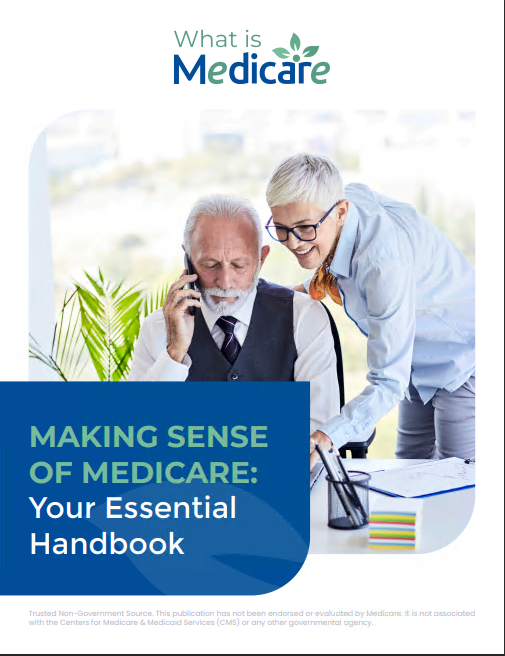Key Takeaways
-
Even plans that sound ideal at first glance can come with hidden restrictions, limited networks, and high out-of-pocket costs that may only become clear after enrollment.
-
In 2025, reviewing the fine print of Medicare Advantage plans is more important than ever, especially as regulations evolve and supplemental benefits vary widely.
When “All-In-One” Sounds Too Good to Be True
If you’re exploring Medicare Advantage plans in 2025, you’re likely being presented with many attractive options that claim to offer everything you need in one convenient bundle. These plans often highlight extras like vision, dental, or fitness benefits. But when you look beyond the surface, some of these plans can be among the worst choices for your long-term health and financial stability. The issue isn’t that they offer too little, but rather that they promise too much without clearly outlining what’s missing or what strings are attached.
The worst Medicare Advantage plans are the ones that appear perfect on paper but create barriers once you actually need care. It’s essential to know the features that can make a plan look good but function poorly.
1. Narrow Provider Networks
Many of the most problematic Medicare Advantage plans in 2025 operate with limited provider networks. These networks may not include your preferred doctors, specialists, or even nearby hospitals.
-
You may be required to switch providers or travel long distances.
-
Out-of-network care can come with high costs or may not be covered at all.
-
Referrals from your primary care doctor are often needed, adding delays and complexity.
The key issue here is access. If your plan restricts your provider choices too tightly, the quality and timeliness of your care may suffer significantly.
2. Hidden Out-of-Pocket Costs
While these plans might advertise low monthly premiums, the hidden costs often appear in the form of high deductibles, copayments, and coinsurance.
-
In 2025, the maximum out-of-pocket limit for in-network care is $9,350, and for combined in-network and out-of-network care, it can reach $14,000.
-
Some plans delay cost-sharing disclosures until after enrollment.
-
Common services like diagnostic imaging, ambulance transport, or durable medical equipment can carry significant coinsurance.
The worst plans tend to underemphasize these financial burdens during enrollment, leaving you with surprises after you’ve already committed.
3. Restrictions on Prescription Drugs
Even with the new $2,000 annual out-of-pocket cap under Medicare Part D in 2025, the way a Medicare Advantage plan manages your prescription drug coverage can still be problematic.
-
Plans may have narrow formularies, excluding medications you need.
-
Prior authorizations and step therapy protocols can delay treatment.
-
Tiered pricing may push name-brand drugs into higher-cost categories.
A plan that sounds great until you go to fill your prescriptions is a common trap. You may not realize a drug is excluded until it’s too late.
4. Excessive Prior Authorization Requirements
Prior authorization is a cost-containment strategy used to control service utilization. However, some of the worst Medicare Advantage plans overuse this process to the point of obstructing necessary care.
-
Even routine services might need prior approval.
-
The approval process can take days or weeks.
-
Appeals are time-consuming and may require your doctor to repeatedly justify care.
In 2025, regulatory scrutiny of prior authorizations has increased, but not all plans have improved. If a plan relies heavily on prior authorizations, it could delay or deny the care you need.
5. Deceptively Structured Supplemental Benefits
Extra perks like vision, hearing, dental, or transportation benefits are often used to make plans seem more generous than they are. However, these benefits can come with restrictions.
-
Dental coverage may only apply to basic cleanings, not major procedures.
-
Vision allowances might not cover both lenses and frames.
-
Over-the-counter (OTC) allowances can be limited to a quarterly window and select vendors.
While these benefits sound appealing, the fine print can be highly limiting. Be cautious of plans that promote add-ons without clarifying what is actually covered.
6. Misleading Star Ratings and Reviews
Star ratings, updated annually by CMS, are meant to reflect the quality of Medicare Advantage plans. However, relying solely on these ratings can be misleading.
-
Star ratings may be based on outdated or non-clinical metrics.
-
Plans with high ratings may still have poor customer service or network problems.
-
Satisfaction scores don’t always reflect the experience of beneficiaries with complex conditions.
A five-star rating doesn’t guarantee satisfaction, especially if your personal needs don’t align with the way that plan is structured.
7. Confusing or Opaque Marketing Practices
Some of the worst plans aggressively market themselves through unclear or overly broad advertising. They may highlight certain features while failing to explain exclusions.
-
You may receive vague mailers with incomplete plan comparisons.
-
Important limitations might be buried in fine print.
-
Sales calls often focus on benefits, not restrictions.
In 2025, marketing regulations are stricter, but misleading promotional material still exists. If the marketing is confusing or evasive, that’s a red flag.
8. Limited Access to Out-of-State Coverage
Many Medicare Advantage plans are regional, and they don’t offer robust coverage outside your service area.
-
Routine care while traveling may not be covered.
-
You may have to pay full cost if you see a provider out of network.
-
Emergency care is covered, but follow-up care may not be.
If you spend part of the year in another state or travel frequently, a plan with limited geographic flexibility could be a poor fit.
9. Inflexibility in Emergency or Urgent Situations
Even though emergency care is generally covered, some Medicare Advantage plans make accessing timely care difficult in urgent scenarios.
-
Some plans require prior authorization for non-emergency transport.
-
Out-of-network urgent care may not be covered depending on location.
-
Disputes over what counts as “emergency” care can leave you with unexpected bills.
This lack of responsiveness during emergencies makes these plans particularly risky if you have chronic or unpredictable medical conditions.
10. Poor Member Services and Claims Support
Customer service matters more than you might think. The worst Medicare Advantage plans in 2025 often fail to support their members through confusing processes like billing errors, denials, or appeals.
-
Wait times to reach service agents can be excessive.
-
Appeals are frequently denied without clear explanation.
-
Representatives may lack the training to resolve complex issues.
When a plan looks good but leaves you stranded during times of need, it can become more of a liability than an asset.
What You Can Do to Protect Yourself
To avoid ending up with one of the worst Medicare Advantage plans, you need to approach plan selection with clarity and attention to detail. Here are proactive steps you can take:
-
Review the plan’s Evidence of Coverage (EOC): This document outlines benefits, exclusions, and cost-sharing details.
-
Check the provider directory: Make sure your doctors and hospitals are in-network.
-
Examine the formulary: Confirm your prescriptions are included and assess their tier levels.
-
Look at the out-of-pocket maximums: Compare these limits carefully, especially if you anticipate frequent healthcare needs.
-
Understand the service area: Make sure the plan covers the locations where you receive care or travel frequently.
-
Ask about supplemental benefit limits: Know how much is covered and whether there’s a cap on services like dental or hearing.
By doing your homework now, you can prevent surprises later.
Why 2025 Plan Selection Requires Special Attention
In 2025, Medicare regulations have evolved to improve beneficiary protections, but plan design still varies significantly. While the new $2,000 cap on Part D drug costs is a major benefit, it does not eliminate other financial risks. Moreover, the variation in supplemental benefits and provider networks has increased as plans try to differentiate themselves. That makes reading the fine print and asking the right questions more essential than ever.
Open Enrollment each year from October 15 to December 7 gives you the chance to switch plans. But once enrolled, changing can be difficult unless you qualify for a Special Enrollment Period.
The worst plan isn’t always the cheapest. It’s the one that doesn’t align with your healthcare needs, burdens you with red tape, or restricts your access when you need care the most.
Watch for What Isn’t Said
Many Medicare Advantage plans in 2025 look more appealing due to added benefits and cost caps. However, it’s often what isn’t mentioned that causes trouble down the road. When choosing a plan, pay special attention to what’s left out of the brochure or not mentioned in sales calls. If the plan seems too perfect, start asking more questions.
Don’t Commit Without Understanding the Trade-Offs
In a landscape where plans compete for your attention using attractive benefits and polished marketing, it’s easy to get pulled in by a surface-level promise. But your healthcare future depends on what lies beneath. Before you sign up, assess the full scope of what’s covered, what’s restricted, and what it will really cost you in a worst-case scenario.
If you’re unsure, speak with a licensed agent listed on this website who can walk you through your options and ensure you’re choosing a plan that fits your needs in both the short and long term.




